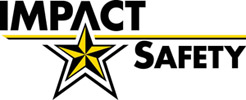Large companies - This is your crunch time for EHS regulatory reporting!
Annual Waste Report (AWS) is due to TCEQ by March 1, 2022
This report is a summary of all the Hazardous and Class 1 wastes generated or shipped from the facility during the year. Companies normally have their waste hauler help them classify industrial wastes into regulatory waste streams categories. Some classifications are non-hazardous (which do not go on this report), an others may be deemed to be Hazardous or Class 1 wastes.
Tier 2 Report is due to TCEQ by March 1, 2022
Tier II is required for companies that have over 10,000 lb of a hazardous chemical on-site or 500 lb (and sometimes less) of extremely hazardous substances (EHS). The data from these reports is required by the Emergency Planning and Community Right-to-Know Act (EPCRA) - Fire departments may access this during emergencies.
Uploading OSHA 300A Data for 2021 is due by March 2, 2022
Uploading 300A summary data on work-related injuries and illnesses during 2021 is required if your company performs industrial activities (such as manufacturing or printing) and had 20 or more employees during 2021. Companies in less hazardous industries don't need to report unless they have 250 or more employees.
Emissions Inventory Report is due to TCEQ by March 31, 2022
Companies with facilities that have significant air pollutants must prepare an annual Emissions Inventory Report (EI) showing monthly emissions for 2021. The report summarizes the monthly VOCs used/emitted and the monthly HAPs (Hazardous Air Pollutants).
For more information on whether your company needs to make any or all of these filings click here.
Details: Annual Waste Summary Report (AWS)- Which companies may need to file and References
Companies that are registered waste generators with TCEQ (have active solid waste registrations) must file the AWS. The report is a short fill-in-the blank form on the TCEQ STEERS platform. Companies should compare their records with their hauler's records prior to entering data into the STEERs account. If your facility does not have any Hazardous or Class 1 wastes and never will, yet you are a registered waste generator, there is a way to inactivate your registration, so you won't have to file for future years.
https://www.tceq.texas.gov/permitting/registration/ihw/waste_reporting.html
Details: Tier 2 -Which companies may need to file and References
Large print companies that have 4 or more electric forklifts often are required to file a tier 2 because of the sulfuric acid in the batteries. You can obtain the weight in forklift and electric pallet jack batteries through your supplier. The weight normally is at or under 18% of the total battery weight. The Tier II is filed through the TCEQ (Texas Commission for Environmental Quality) STEERs system.
https://www.tceq.texas.gov/permitting/tier2/am-i-regulated
Details: Uploading OSHA 300A - References
The data can be manually entered into the OSHA ITA (Injury Tracking Application) portal, or it can be uploaded to the ITA
Someone at your company should already have an account set-up (with password) from previous years. Link to log-in page:
https://www.osha.gov/injuryreporting/ita/
If you are new to this you can follow this link for instructions and to get a feel for what the on-line interface is like for submitting your data (Note: You need to have the company EIN number handy):
https://youtu.be/YPQ5uWg8tyY?t=10
Details: Emission Inventory (EI) -Which companies may need to file and References
Printing companies that emit 10 tons or more of VOCs (Volatile Organic Compounds) need to file this report. A printing company with four 40 inch sheetfed litho presses could reach 10 TPY VOCs and a single web litho press sometimes reaches these levels on it's own. Of course type ink, washes, hours run, sheet size etc will all be factors. Normally, this data file is built month by month throughout the year using purchasing data from chemical suppliers. The data is entered into custom advanced spreadsheets that calculate VOCs and the constituent HAPs for each relevant chemical product used in the printing and wash-up processes. The VOCs contained in shipped wastes can be subtracted from the total VOCs used. Most print companies utilize an outside resource to set-up and maintain these on-going calculations.
https://www.tceq.texas.gov/airquality/point-source-ei/rg-360-21
https://www.tceq.texas.gov/downloads/air-quality/point-source/guidance/rg-360-21-chapter-1.pdf
This information is given as a general reminder to companies that routinely file the mentioned regulatory reports. It is also provided to help companies that may be required to file but were not aware. The information given is general and may not be specific enough to tell you whether your company is required to file the mentioned environmental reports - The links provided should get you started on determining what actions may be required by your company.

Impact Safety exists to help companies build and maintain effective safety programs that employees are proud to participate in. We provide in-person services in Texas and on-line safety training for the country. [email protected]
